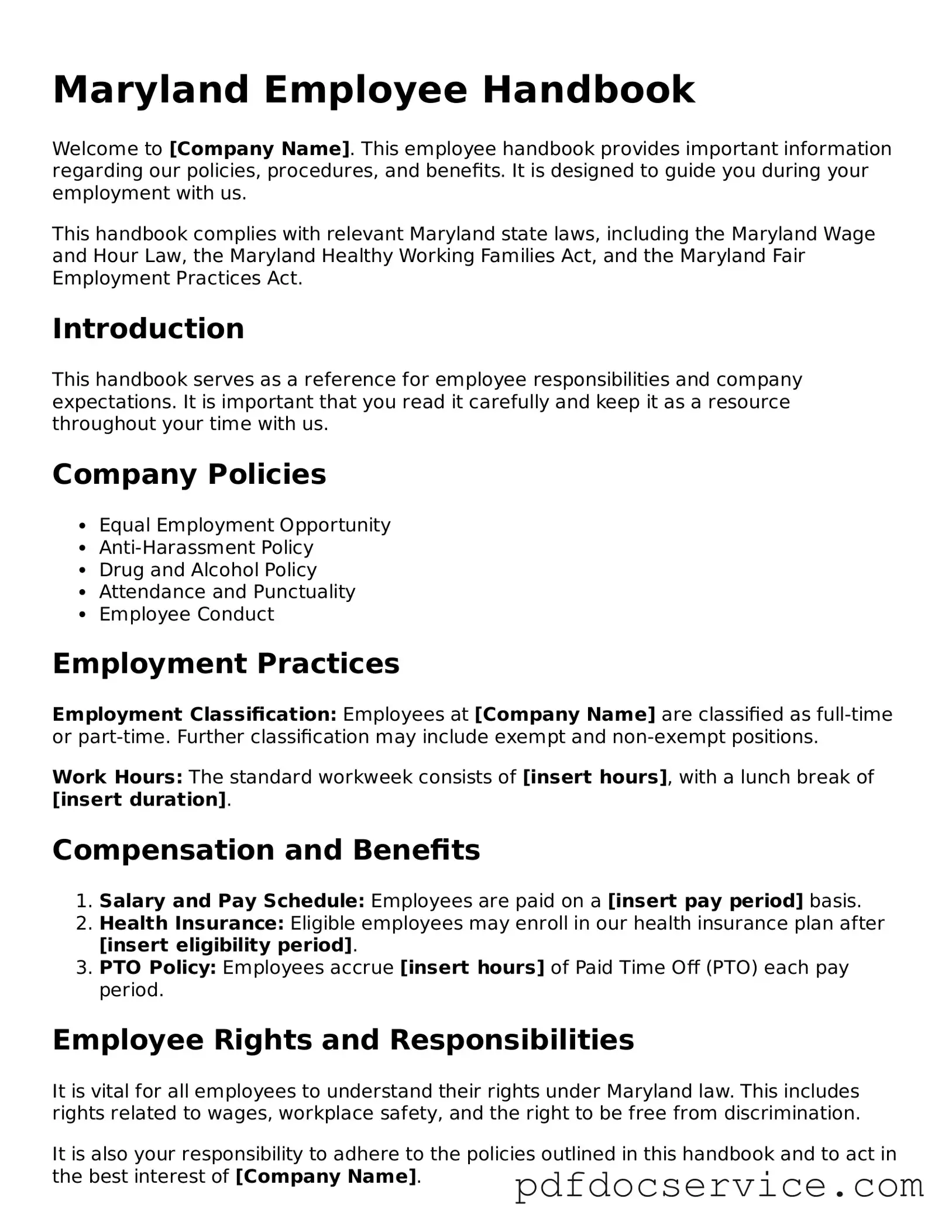The Maryland Employee Handbook form is a document that outlines the policies, procedures, and expectations of an employer regarding their employees. It serves as a guide for employees to understand their rights, responsibilities, and the company's culture. This handbook is essential for fostering a positive work environment and ensuring compliance with state and federal laws.
All employers in Maryland, regardless of size, should consider creating an employee handbook. This document is particularly important for businesses with multiple employees, as it helps to standardize practices and communicate important information effectively. New employees should receive a copy of the handbook upon hiring.
What should be included in the Employee Handbook?
An effective employee handbook should cover a variety of topics, including:
-
Company mission and values
-
Employment policies (hiring, termination, and promotion)
-
Compensation and benefits
-
Workplace conduct and expectations
-
Anti-discrimination and harassment policies
-
Leave policies (sick leave, vacation, family leave)
-
Health and safety guidelines
-
Disciplinary procedures
Is it mandatory to have an Employee Handbook in Maryland?
While it is not legally required to have an employee handbook in Maryland, having one is highly recommended. A well-crafted handbook can help protect the employer from potential legal issues by clearly communicating policies and procedures. It also helps to set expectations for employees, which can lead to a more harmonious workplace.
How often should the Employee Handbook be updated?
It is important to review and update the employee handbook regularly. Changes in laws, company policies, or workplace culture may necessitate updates. A good practice is to review the handbook at least once a year or whenever significant changes occur. Keeping the handbook current ensures that employees have access to the most relevant information.
Absolutely! Involving employees in the development or revision of the handbook can foster a sense of ownership and engagement. Consider conducting surveys or focus groups to gather feedback. This collaborative approach can lead to a more comprehensive and effective handbook.
How should the Employee Handbook be distributed?
The employee handbook should be distributed to all employees in a manner that is accessible and easy to understand. Options include:
-
Providing printed copies during onboarding.
-
Making the handbook available on the company intranet or website.
-
Sending digital copies via email.
Regardless of the method, ensure that employees acknowledge receipt of the handbook, which can be done through a signed acknowledgment form.
What if an employee does not follow the policies outlined in the handbook?
If an employee fails to adhere to the policies in the handbook, the employer should follow the disciplinary procedures outlined within the document. Consistency is key. Treat similar violations in the same manner to ensure fairness and transparency. This approach not only helps maintain order but also reinforces the importance of the handbook.
Where can I find resources to help create an Employee Handbook?
Numerous resources are available to assist in creating an employee handbook. Consider checking out:
-
State labor department websites for guidelines and templates.
-
Human resources associations that offer sample handbooks.
-
Legal professionals who specialize in employment law.
Utilizing these resources can help ensure that your handbook is comprehensive and compliant with applicable laws.
